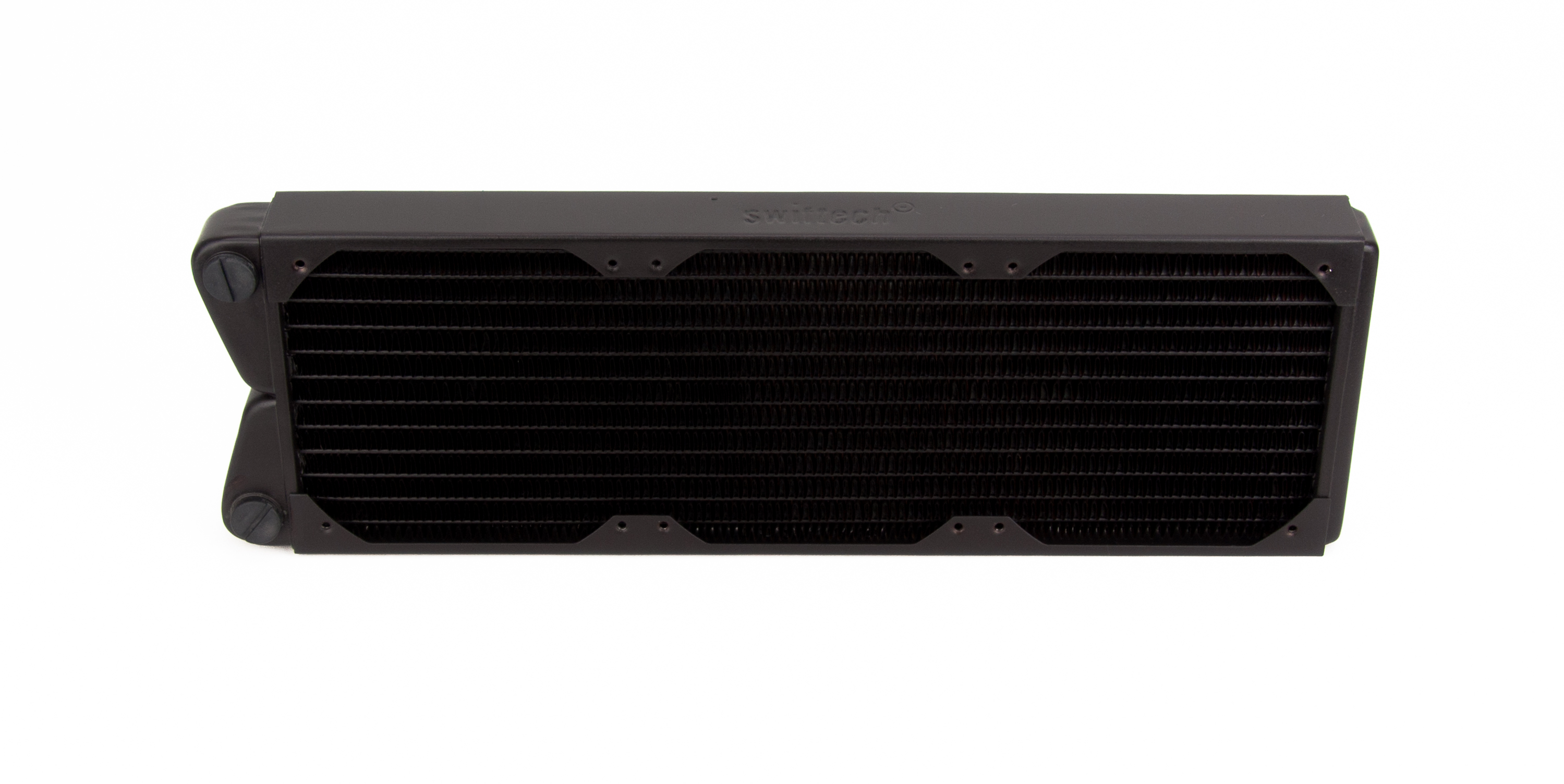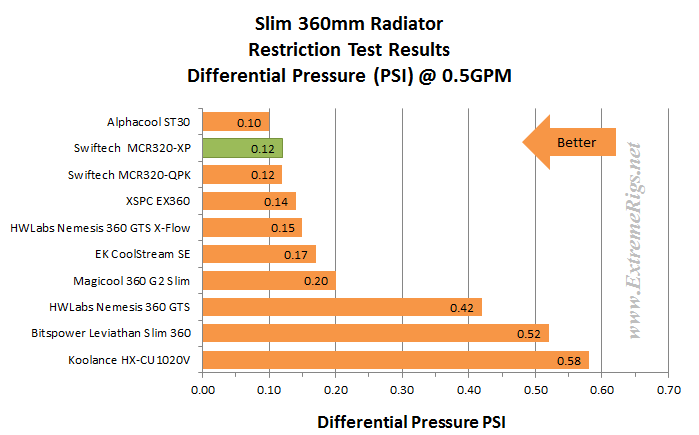The Data
As all our testing for 360mm radiators are performed with the exact same equipment, using the exact same methods we have decided to (try and) keep each radiator’s pages uncluttered by posting our testing methodology, test set-ups and equipment used in a single location. To see exactly how the tests were carried out, details of the test set ups and equipment used, please head back to the RRU Test Setup page.
Restriction Test
It is generally agreed that radiators are one of, if not the least restrictive components in the water cooling loop. There are some exceptions however, so this must still be verified through testing:
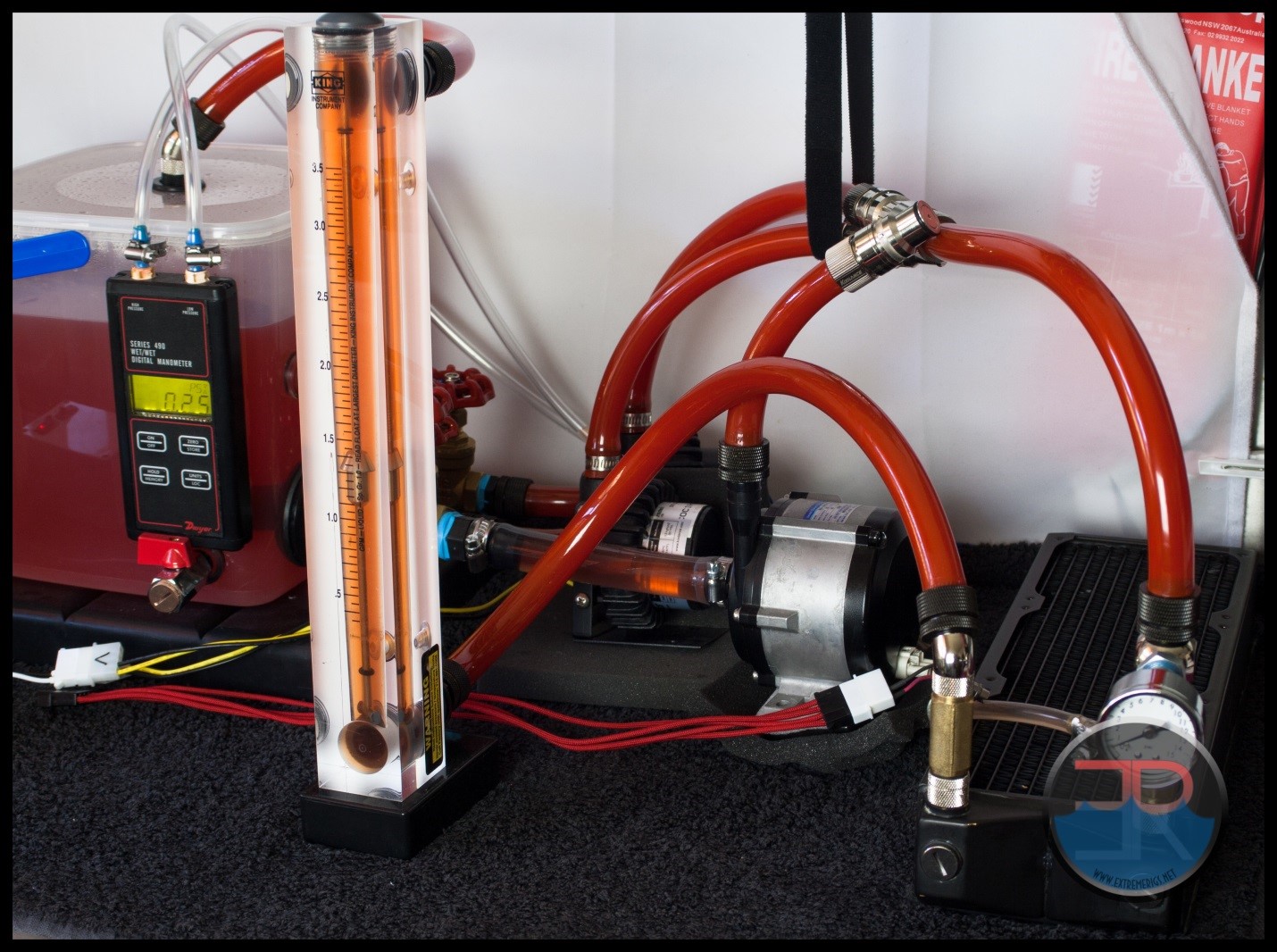 The above photo is for referencing the restriction test bench The MCR320-XP is not loaded so please disregard the data in the picture as it does not relate to the its test results.
The above photo is for referencing the restriction test bench The MCR320-XP is not loaded so please disregard the data in the picture as it does not relate to the its test results.
Here is the raw data at the tested flow rates, displaying the measured Differential Pressure across the radiator as flow rate was increased.
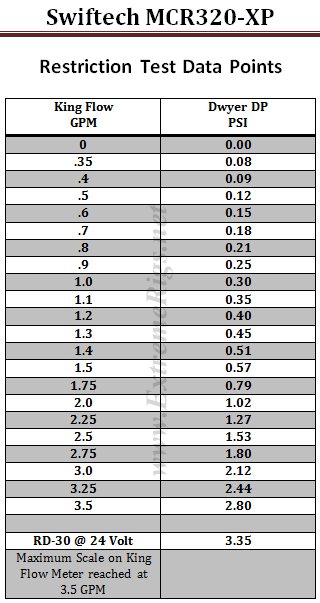 The table numbers indicate that the MCR320-XP is a medium restriction radiator. Numbers in isolation sometimes only tell half the story. By plotting against other components it more easily shows the whole story.
The table numbers indicate that the MCR320-XP is a medium restriction radiator. Numbers in isolation sometimes only tell half the story. By plotting against other components it more easily shows the whole story.
We use a HeatKiller 3.0 CPU block as the reference in this next plot for two reasons. Firstly there is little chance of the plot being cluttered by curves overlapping and secondly it gives a reference point against a fairly common loop component of average restriction.
As with all previous radiator restriction plots, we have limited the maximum flow rate displayed to 2.0 GPM as we suspect there are very few systems that operate above 2.0 GPM. For more information on how to read a restriction plot check out our guide.
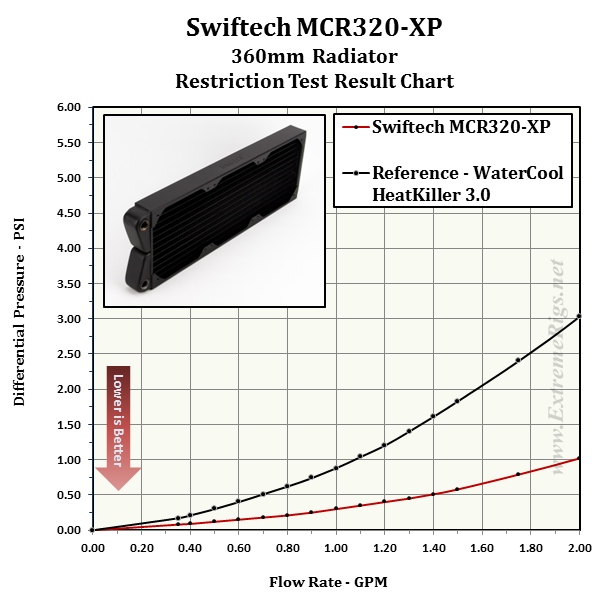 This plots indicates the MCR320-XP is a low restriction loop component when compared to a CPU block of average restriction, but what about other radiators?
This plots indicates the MCR320-XP is a low restriction loop component when compared to a CPU block of average restriction, but what about other radiators?
The next three plots show the restriction level at three different flow rates compared to the other Slim 360mm radiator that have been tested. We consider the chosen GPM rates to represent systems which have low, medium and high flow rates. Additionally, a spoilered plot has been included which shows the comparison against all the 360mm radiators.
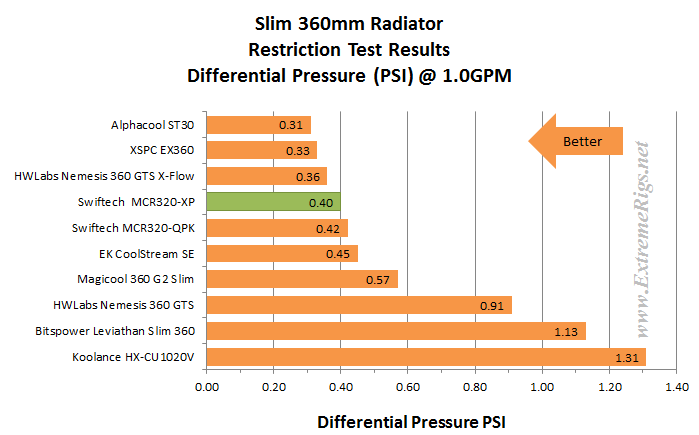
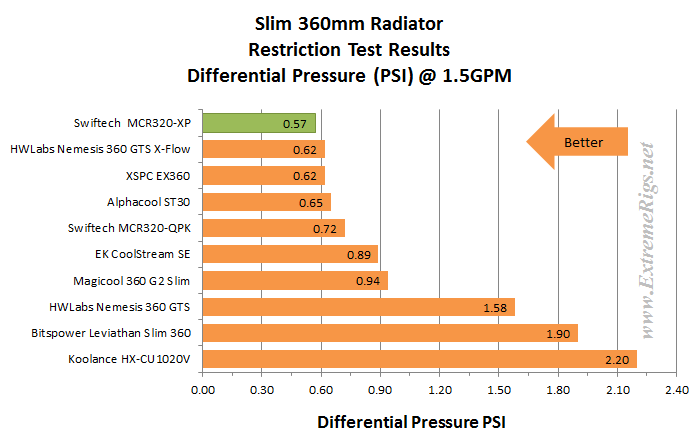 At 0.5 and 1.0 GPM the MCR320-XP and MRC320-QPK are virtually identical, while in the 1.5 GPM table above the XP is lower then the QP. Our only explanation for this is that the MCR320-XP’s tubes have expended slightly during the test which would lower the radiator’s overall restriction. We do not believe it was simply an error in recording the 1.5 GPM data point on either of the radiators, as each set of results produce nicely flowing curves.
At 0.5 and 1.0 GPM the MCR320-XP and MRC320-QPK are virtually identical, while in the 1.5 GPM table above the XP is lower then the QP. Our only explanation for this is that the MCR320-XP’s tubes have expended slightly during the test which would lower the radiator’s overall restriction. We do not believe it was simply an error in recording the 1.5 GPM data point on either of the radiators, as each set of results produce nicely flowing curves.
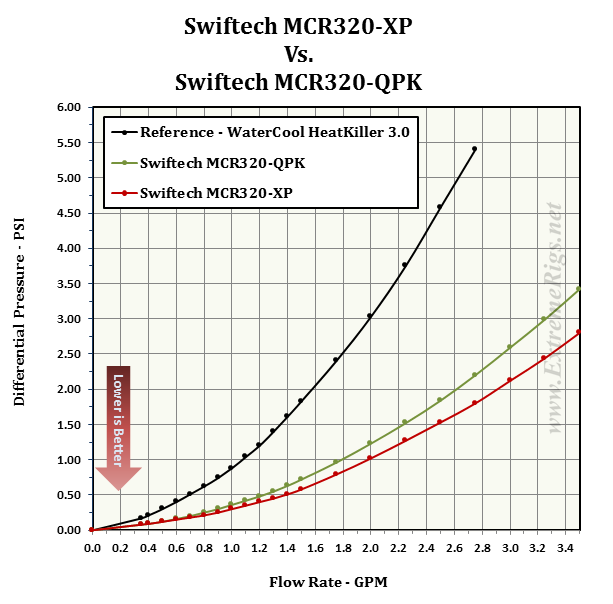 Finally for restriction let’s take a look at where the MCR320-XP fits in relation to all the radiators we have tested. For this plot, only results for 1.0 GPM have been used for the comparison.
Finally for restriction let’s take a look at where the MCR320-XP fits in relation to all the radiators we have tested. For this plot, only results for 1.0 GPM have been used for the comparison.
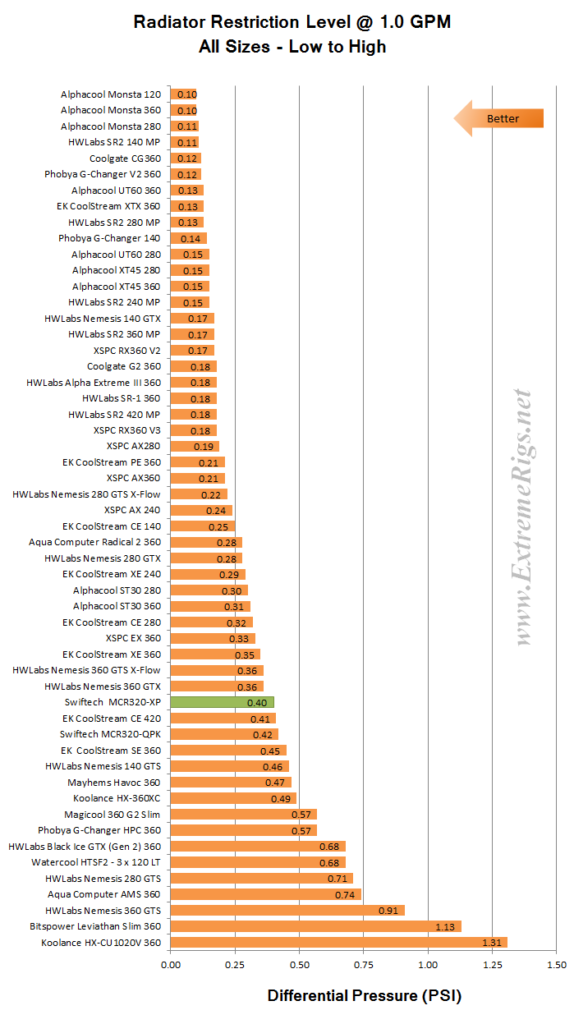 When put into context with all the radiators at 1.0 gpm, the MCR320-XP fits our criteria for a medium restriction radiator. This means consideration for pump power is not overly important, even if intending to run a couple of these radiators in your loop.
When put into context with all the radiators at 1.0 gpm, the MCR320-XP fits our criteria for a medium restriction radiator. This means consideration for pump power is not overly important, even if intending to run a couple of these radiators in your loop.
Onwards to Thermal Performance!







